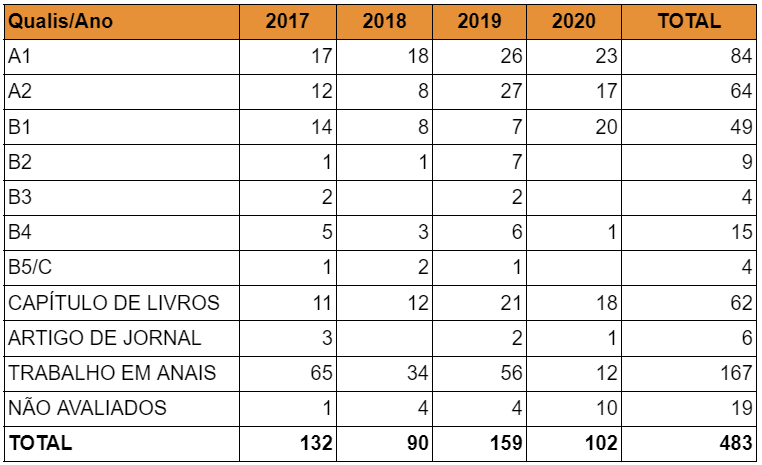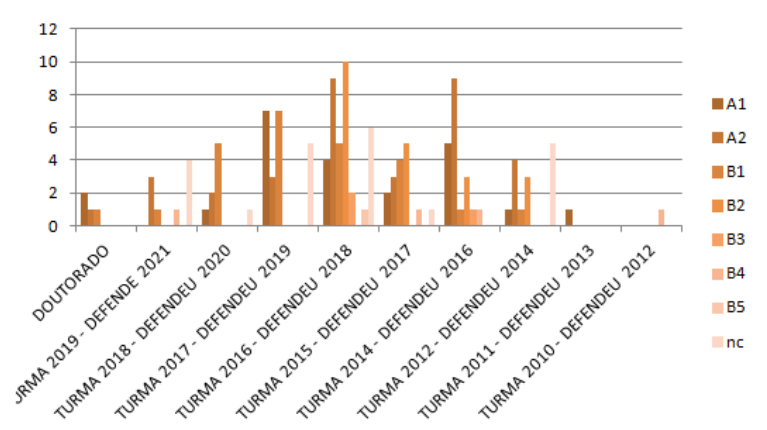Publications
There is a growing intellectual production by PPG-AMSA professors in the upper strata: over the four-year period, 64% (148 of 229 publications in journals) and 30% of the total production (148 of 483 of the total publications) of the teaching production was in strata A1 and A2. The 148 publications in the upper strata were distributed annually as follows: 29 publications in 2017, 26 publications in 2018, 53 in 2019 and 40 in 2020 (even in the context of a pandemic).


Students and alumni (since 2012 – five years before the start of the four-year period) published, between 2017 and 2020, 133 articles in journals, 30 book chapters and 69 publications in proceedings. These metrics are considered excellent and clearly demonstrate the proactivity and motivation of our students and alumni to publish. Of these publications, 23 (18%) are in A1 journals, 34 (25.5%) in journals with Qualis A2, 25 (18%) in journals classified as Qualis B1, 21 (15%) are in Qualis B2 journals. Only 22 (16%) are in non-classified journals in Environmental Sciences.
The Permanent Professors (DPs) certainly encourage this proactivity in relation to publishing and invite their advisees to publish together in quality journals with a high impact factor. Of the 84 articles published in A1 journals by the DPs, more than 20% had the participation of students and/or alumni. Of the 64 A2 publications by the DPs, more than 25 (over 40%) include students and/or alumni of the PPG-AMSA as co-authors. These metrics and the encouragement of co-authorship between DPs, students and alumni have yielded good results, but should be further encouraged.
To date, the class with the largest number of publications was the class of 2016 (defense in 2018) which, in total, published 37 articles. It is followed by the class of 2017 (defense in 2019) with 22 publications and the class of 2014 (defense in 2016) with 20 publications. It is worth noting that the most recent classes have a smaller number of papers since most of the papers are under peer review. Furthermore, as our doctorate began in 2018, we still do not have any students who have defended their thesis and, therefore, have not completed their research, so the number of publications is extremely significant.



